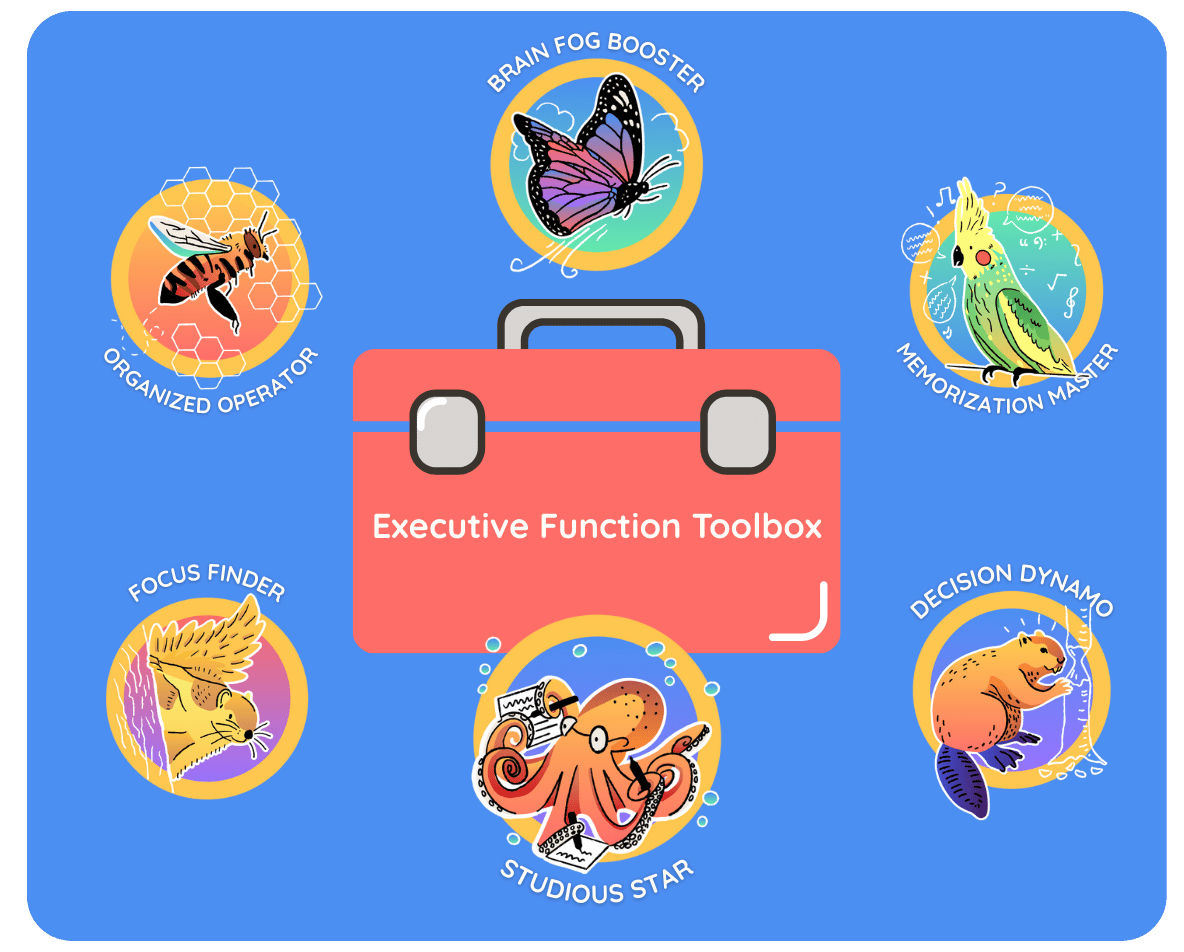CHAT SPOTLIGHT: Walk through an educator self-advocacy chat to see how Alongside can help support staff in the upcoming year.
As we enter a new school year, school administrators often reflect on how the previous school year went and how they can go into the new year with a welcoming and inclusive environment for all students and staff. A positive school culture not only enhances academic performance but also fosters positive social development and strong relationships among students and staff. An inclusive and safe school environment is something we are all striving for and each year seems to be increasingly important.
Here are some practical tips to help you start the school year on a positive note and cultivate a school culture where every student feels valued and included. While you likely are already familiar with these strategies, it's always beneficial to revisit the foundational principles that support the welcoming school culture educators strive to maintain.
1. Establish a Positive Tone from Day One
Start with a warm welcome. Send personalized messages to students and parents before the school year begins, expressing excitement about the new year. Consider also sending welcome messages to new and returning staff members to help them feel valued from the start. Some examples include:
- Signage: Use school signage and bulletin boards to display inclusive messages and diverse representations of students. Include staff appreciation boards and educator spotlights to recognize the diverse talents of your teaching team.
- Activities: Ensure staff provide fun and interesting first day activities for staff and students to get to know each other. Icebreakers, group activities, and school tours can help newcomers feel comfortable and integrated. Start the year with team-building activities for staff as well, creating connections that will strengthen collaboration throughout the year.

Alongside in action...
Alongside partner schools hang posters and informational materials throughout hallways, cafeterias, and common areas so students see mental health support messaging from their very first school tour. These visual reminders create an immediate signal that wellbeing is prioritized. Staff also benefit by having consistent talking points about support resources readily available, reducing the burden of remembering all available services while reinforcing their role as wellness advocates.
2. Focus on Relationships
Build Strong Teacher-Student Connections
These connections really make a big difference and sometimes teachers and school staff are the main source of support for many students. Encourage teachers to spend the first few days building relationships with students. Simple actions like greeting students at the door, learning their names quickly, and showing genuine interest in their lives can make a significant difference. Similarly, administrators should model this behavior by learning about their staff members' lives, interests, and professional goals to build trust and rapport.
Cultivate Mentorship Opportunities
Establish peer mentorship programs where older students support and guide younger or new students. This not only helps the new students feel connected to older students but also offers leadership skills among the youth mentors. Create similar mentorship programs for staff, pairing experienced teachers with new educators to foster professional growth and a supportive work environment.
Alongside in Action...
Teachers at our partner schools use Alongside's chat feature to get personalized icebreaker recommendations tailored to their specific classroom dynamics and student needs. This removes the guesswork from relationship-building activities and provides fresh ideas throughout the year. Staff report feeling more confident facilitating meaningful connections and less stressed about planning engaging activities.
3. Make Sure Every Voice is Heard
A truly inclusive school culture ensures that both students and staff have meaningful ways to express their needs, share ideas, and contribute to school improvement. When people feel heard, they feel valued—and that sense of belonging is foundational to engagement and wellbeing.
Create Opportunities for Input
Establish multiple pathways for students and staff to share their perspectives. This can include student councils, advisory boards, anonymous suggestion forms, and regular feedback surveys. For educators, teacher leadership teams, staff forums, and one-on-one check-ins can open communication while reinforcing trust.
Normalize Feedback and Self-Advocacy
Teach students how to express concerns respectfully and take part in decision-making. Similarly, create a school culture where educators are encouraged to advocate for their professional and emotional needs. When teachers feel safe naming their boundaries or asking for support, they are better equipped to show up for students—and model those same skills in the classroom.
Check In Often
Pulse checks at different points in the year help identify what’s working and what could be improved. These can be as simple as a quick survey or as in-depth as structured listening sessions with small groups of students or staff. Make sure to follow up on what you hear to build trust and accountability.
Alongside in Action...
School leaders at partner districts use Alongside’s Dashboard to track anonymous student concerns and trending topics, using this data to inform decisions about programming, supports, and school climate efforts. Educators also use Alongside for Educators to reflect on their own needs, build communication skills, and navigate conversations with leadership—helping to create a culture where staff voice is not only welcomed, but supported.
4. Protect Physical & Emotional Safety
Take Strong Action on Bullying & Discrimination: Establish and communicate clear policies against bullying and discrimination. Ensure that all students and staff are aware of the procedures for reporting and addressing such incidents. These policies should explicitly protect staff members as well, ensuring a workplace free from harassment and discrimination. A few ways to do this is to enact proactive measures such as implementing programs that teach empathy, conflict resolution, and respectful communication. Initiatives like peer mediation and restorative justice can help resolve conflicts and build a supportive school community.
Physical Accessibility and Safe Space
Ensure that the school's facilities are accessible to all students, including those with disabilities. This includes ramps, elevators, and accessible restrooms. Also ensure that staff workspaces, lounges, and meeting rooms are fully accessible to educators with disabilities. Designate safe spaces where students can go if they need support, whether it's a counselor's office, a quiet room, or a peer support center. Create similar spaces for staff wellness, such as quiet rooms for planning periods or dedicated areas for mental health breaks. Additionally, ensure your school safety plans are trauma-informed.
Alongside in Action...
Our partner schools encourage students to use Alongside's reporting features to share safety concerns, creating a 24/7 channel for students to communicate issues that might otherwise go unreported. This system supports staff by providing early warning about potential problems and clear documentation for follow-up actions
5. Celebrate Diversity
Take steps to ensure that the district curriculum reflects diverse cultures, histories, and perspectives. This not only validates the experiences of all students but also broadens everyone's understanding and appreciation of different backgrounds. Equally important is celebrating the diverse backgrounds and experiences of your staff members, creating opportunities for educators to share their unique perspectives and cultural knowledge with colleagues. In planning events that celebrate diversity and various cultures, traditions and holidays, encourage students to share their own traditions and experiences. Invite staff to contribute their cultural traditions to school celebrations and professional development sessions.
Alongside in Action...
Partner schools demonstrate Alongside's multiple language options and accessibility features during diversity celebrations and cultural events, showing students that mental health support is available in ways that honor their backgrounds and needs. This demonstrates inclusive practice in action while equipping staff with concrete tools to support multilingual families and students with different accessibility needs.
6. Engage Parents and the Community
Maintain regular communication with parents and guardians. Use newsletters, social media, and school websites to keep them informed and involved in school activities. Each month, Alongside’s LeadWell blog offers community resources to help you out. These shareable resources on timely topics are ready-made for you to share in your school and district communication channels. When engaging parents, ensure your staff feels supported in these interactions by providing training on effective parent communication and establishing clear boundaries to protect teacher wellbeing.

SHARE THIS! Tips for students and families to set the tone for a positive year
Beyond this, be sure to collaborate with community organizations to provide resources and support for students and families. This can include after-school programs, counseling services, and cultural events. Partner with organizations that can also support staff wellness, such as local fitness centers, mental health providers, or professional development institutions.
Alongside in Action...
Our partner schools include Alongside information at Parent Nights, Community Resource Fairs, and Mental Health awareness events, ensuring families know about available support options. This proactive communication helps staff by creating informed parent partnerships and reducing crisis intervention conversations.
7. Professional Development for Staff
Offering training throughout the school year on inclusivity, as well as topics related to supporting student and staff mental health, can go a long way in equipping staff with the skills they need to handle diverse classrooms and support a supportive school culture. Remember that professional development should not only focus on how teachers can support students, but also on their own wellbeing and professional growth. Strive to offer ongoing professional development for teachers and staff on topics such as cultural competency, anti-bullying strategies, and inclusive teaching practices.
Alongside offers a variety of professional development workshops to promote mental health literacy and supportive schools, organized into two strands:
- Supporting Students and Staff
- Classroom Management, Effective Implementation & Data-Driven Support
Beyond professional development, set up systems and norms that promote peer-to-peer learning among staff members by offering adequate time for staff to collaborate and support each other throughout the year. Peer observations, team teaching, and staff meetings focused on inclusivity can also provide opportunities for building a supportive professional learning environment.
Alongside in Action...
Partner districts regularly incorporate Alongside data and resources into staff PD sessions, keeping mental health trends and intervention strategies top-of-mind for educators. This ongoing integration helps staff stay current on student needs while building their confidence in recognizing and responding to mental health concerns.
8. Celebrate & Reflect
Schools and districts that excel at providing welcoming and inclusive learning environments prioritize celebrating and success and reflection to foster continuous improvement.
Recognition Programs
Set a tone for celebrating not just academic achievements, but also positive contributions to school culture and improvements in behavioral trends. This can be done through awards, shout-outs, and bulletin boards showcasing student and staff efforts. Equally important is recognizing staff contributions beyond test scores—celebrate innovative teaching methods, mentorship, collaboration, and efforts to create inclusive classrooms. It is important to make it a priority that recognition programs are inclusive and diverse, celebrating a wide range of talents and contributions from all.
Continuously Reflect and Improve
Regularly assess the school culture through surveys, focus groups, and observations. Use this data to identify areas for improvement and to measure the impact of your initiatives. Include staff satisfaction and workplace culture assessments in these evaluations to ensure your inclusive efforts extend to the educator experience. As the school year progresses, adapt and evolve with the students. Be open to change and continuously seek ways to improve. Involve students, staff, and the community in this process to ensure that the school culture evolves to meet the needs of everyone.
Alongside in Action...
Partner schools use Alongside Dashboard data as part of their regular school culture assessments, measuring engagement with mental health resources alongside traditional metrics. This comprehensive approach gives administrators and staff concrete data about the impact of their wellness initiatives and identifies areas for continued growth.
Keep the Momentum Going
Creating a welcoming and inclusive school culture is an ongoing effort that requires both commitment and collaboration from administrators, staff, students, and the community. By implementing these tips, you can help ensure that your school is a place where every student and educator feels valued, supported, and empowered to succeed. As the new school year begins, let's embrace the opportunity to build a positive, inclusive environment that nurtures the growth and well-being of all members of our school community—students and staff alike.
Rady to start the year strong? Try a free demo of Alongside today!

%20(1).jpg)

